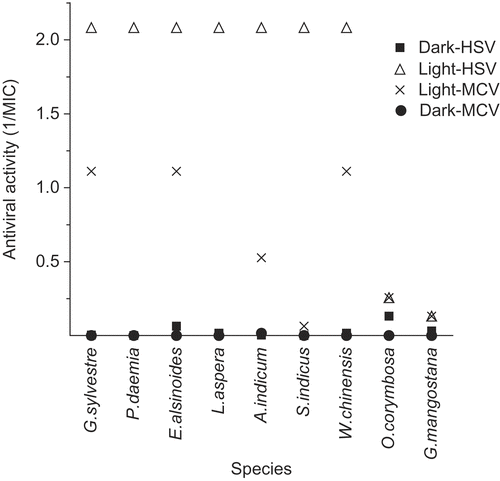Figures & data
Table 1. Relevant characteristics of the species used in this study.
Figure 1. Anti-HSV plant extracts (virucidal protocol). Results for each of the indicated species are plotted as reciprocals of the MIC (minimum inhibitory concentration) in μg/mL. The higher the bar, the greater the antiviral activity. Thus a value of 2.0 represents an MIC of 0.5 μg/mL (or less in some cases) other plant species showed little or no activity.
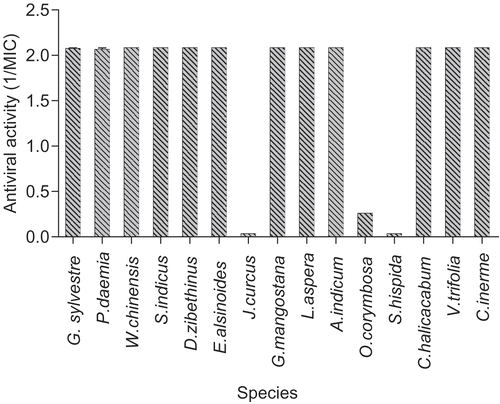
Figure 2. Anti-coronavirus (MCV) extracts (virucidal protocol). Results for each of the indicated species are plotted as reciprocals of the MIC (minimum inhibitory concentration) in μg/mL. The higher the bar, the greater the antiviral activity. Thus a value of 2.0 represents a MIC of 0.5 μg/mL (or less in some cases) other plant species showed no activity.
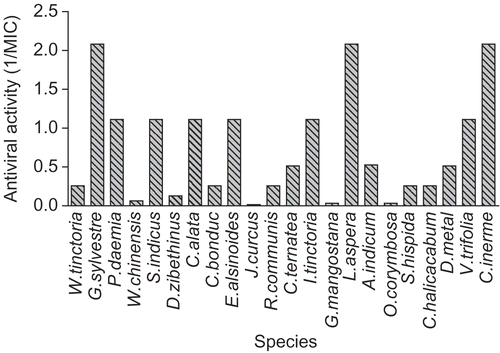
Figure 3. Anti-calicivirus (FCV) extracts (virucidal protocol). Results for each of the indicated species are plotted as reciprocals of the MIC (minimum inhibitory concentration) in μg/mL. The higher the bar, the greater the antiviral activity. Other plant species showed no activity.
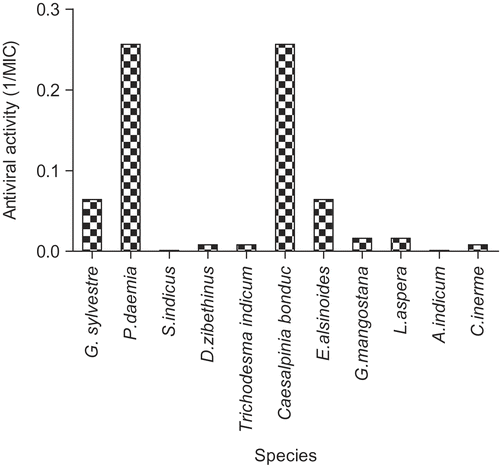
Figure 4. Antiviral activities (pre-exposure protocol). Results for each of the indicated species are plotted as reciprocals of the MIC (minimum inhibitory concentration) in μg/mL. The higher the bar, the greater the antiviral activity. Other plant species showed no activity.
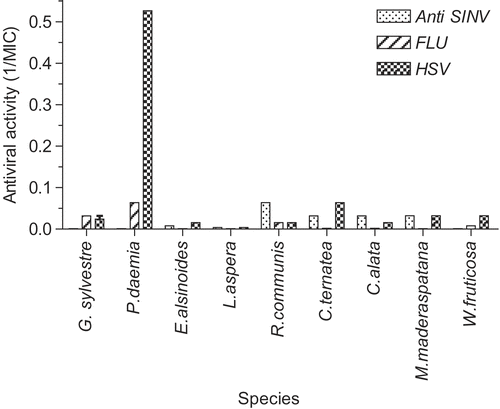
Figure 5. Antiviral photosensitizers (virucidal protocol). MIC values were measured against HSV and MCV (virucidal protocol) both in light and in dark (details in Materials and methods section), and the results plotted as reciprocals as in . All extracts except O. corymbosa and G. mangostana showed marked light-enhanced or light-dependent activity typical of photosensitizers.
